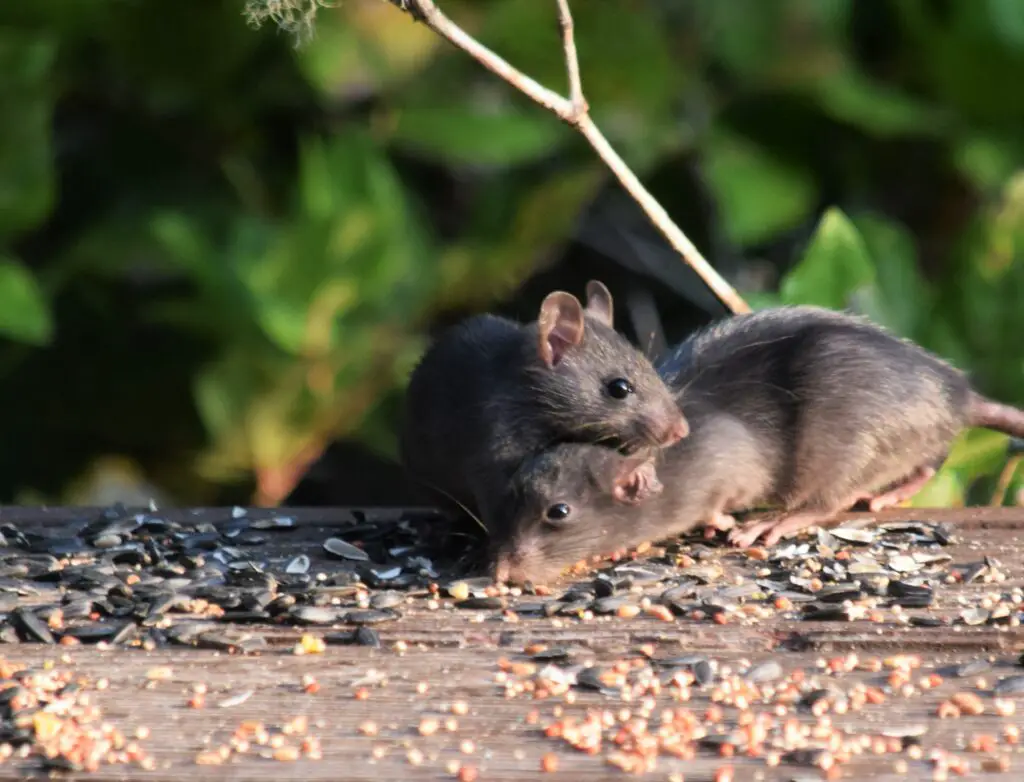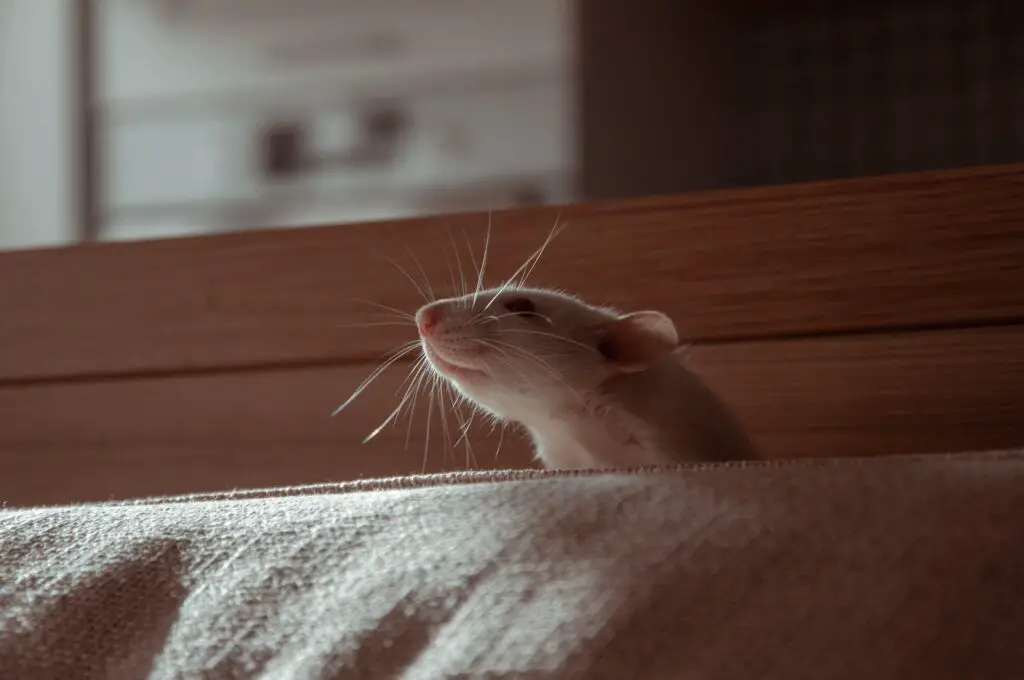Mice sneak into homes searching for food and shelter, especially during colder months. They can squeeze through tiny cracks in the foundation and even use gas lines as pathways. Once inside, these pests find places to hide and reproduce, quickly leading to a mouse in the house situation. It’s not just the visible spaces; mice breed in secluded areas, making their presence challenging to detect until it’s too late.
Their small size allows them to exploit even the smallest openings, and they are notorious for using sewer lines to move around unnoticed. Homeowners must be vigilant, as a house can offer numerous hidden access points for these tiny intruders. Regular inspections for entry points are essential to keep these unwelcome guests at bay.
Understanding the Stealthy Intruders of Winter
As temperatures drop, mice seek warmth and often find refuge within our homes, becoming unwanted winter companions. Check out more at the link here.
Identifying Telltale Signs of Mouse Entry
Discovering chew marks on food packaging or belongings can signal a mouse in the house, alerting homeowners to take action.
Scratching Noises: The Midnight Chorus
Scratching noises within walls or ceilings at night are a disturbing indication of mice activity, hinting at their nocturnal escapades.
Unpleasant Odors: Tracing the Source
An unpleasant odor often leads homeowners to uncover hidden mouse nests, revealing an infestation that requires immediate attention.

Recognizing the Dangers of a Mouse Presence
The presence of house mice poses serious risks, from the spread of diseases like lymphocytic choriomeningitis to gnawing on electrical wires.
Health Hazards Linked to Rodents
A rodent infestation is a significant health concern, as mice and rats can carry diseases. Homeowners should employ rodent control methods, like filling cracks and crevices with steel wool, to prevent rodents from seeking warmth and shelter inside. Control and prevention are crucial, as rodents can chew through materials, causing more than just a nuisance.
Property Damage: From Gnawing to Nest Building
Mice gather materials to build their nest, often causing damage to property as they gnaw their way through various substances to create a cozy mouse nest.
The Most Common Entryways Mice Exploit
Mice utilize common access points like garage doors, seeking the warmest areas to build their nest, often prompting a call to a trained pest professional.
Cracks and Holes: Mice’s Favorite Passageways
Mice view any access points in outer walls as invitations; and to make matters worse, rodents can chew to enlarge these openings, creating more passageways for themselves and other pests.
Vents and Pipes: Highways for Rodent Travelers
Quiet and dark, the attic at night becomes a prime highway for mice, using vents and pipes to navigate and explore.
Proactive Measures to Deter Winter Mouse Invasions
Preventing mouse problems begins with proactive steps and sometimes the assistance of a certified pest professional for residential pest control.
Food Security: Protecting Your Provisions
Storing food in glass or metal containers is an effective way to deter mice from accessing your supplies.
Pet Food Protocols: Don’t Invite Unwanted Guests
Using glass or metal containers for pet food storage is vital in preventing mice from turning your pet’s food into their feast.
Kitchen Fortification: Sealing the Buffet
Sealing food sources tightly and maintaining a clean kitchen are essential strategies in fortifying your home against mice looking for a meal.
Home Maintenance: Sealing Their Routes of Entry
Keeping mice out means sealing up their favorite entryways. A mouse can fit through tiny cracks or holes, so inspect your home for any potential entrance for mice. Patching up these holes in walls and ensuring no chew holes remain is essential. Remember, mice droppings are a telltale sign of their presence, so if you spot these, it’s time to search for gaps and seal them immediately.
Declutter and Clean: Reducing Hiding Spots and Attractions
A tidy home is less attractive to mice, who seek out cozy hiding places. Decluttering removes the nooks and crannies that mice use as shelter. Regular cleaning eliminates crumbs and spills that could otherwise lure them inside. By minimizing both hiding spots and food sources, you reduce the chance of a mouse considering your home an ideal spot for its next nest.
Home Repairs: Fortifying Your Castle Against Mice
Diligent home repairs can keep your living space mouse-free. Seal any chew holes and repair holes in walls where these pests may gain entry. Also, be aware that mice can carry diseases, so handle any mice droppings with care during your repair efforts. A well-maintained home is your first line of defense against these unwelcome invaders.

Professional Solutions for Your Mouse Problem
When mouse problems persist, it’s time to call in certified pest experts. A residential pest control service can offer effective solutions tailored to your specific situation. These professionals are equipped to handle infestations with precision and care, ensuring that your home remains a sanctuary free from rodent troubles.
Customized Expertise: Tailored Mouse Extermination
Every home is unique, and so is every mouse infestation. Pest control specialists assess your home to create a customized extermination plan. They consider factors like home layout, the severity of the infestation, and potential entry points to provide a tailored solution. This approach ensures thorough removal and prevents future invasions.
Experts also educate homeowners on proactive measures to keep mice at bay. From identifying early signs of infestation to recommending structural adjustments, these professionals offer invaluable advice to maintain a rodent-free environment.
Ongoing Defense: Preventative Strategies for Peace of Mind
Maintaining a mouse-free home requires ongoing effort. Pest management isn’t just about dealing with current issues; it’s also about preventing future problems. By integrating routine inspections, sealing entry points, and keeping vigilant about cleanliness, homeowners can establish a robust defense that deters mice year-round, ensuring peace of mind.
Outsmarting Mice: Your Guide to a Rodent-Free Home
Mice are sneaky, but with the right knowledge, you can outsmart them. Preventing mice from entering your home involves a comprehensive strategy. Seal cracks and holes in exterior walls with a caulking gun. Ensure that gaps in windows are closed and that drainage pipes are not improperly sealed. Pay special attention to tiny gaps and entry holes that mice can exploit.
Inside, keep pantry food in secure containers, and remember that pet food should be stored properly to avoid attracting mice and other rodents. Look for signs like chew holes and mouse droppings to stay ahead of any potential infestations. Remember, a mouse can fit through a hole the size of a dime, so don’t overlook even the smallest openings. If you’ve noticed signs of mice, don’t hesitate to contact a pest control company for a comprehensive pest management plan. Check more about this here.
Integrating Prevention and Control: A Synergistic Approach
Effective mouse control combines preventative measures with active extermination when necessary. Sealing up entry points and reducing attractants like food and nesting materials must go hand-in-hand with extermination efforts if mice have already infiltrated. This synergistic approach ensures that once mice are removed, they’re less likely to return.
The Last Line of Defense: When to Call the Professionals
If you’ve done all you can and still find signs of a mouse in your house, it may be time to call the professionals. Pest control experts can assess areas where pipes enter and exit your home, spots for mice to hide, and other vulnerabilities. Their expertise can be the decisive factor in reclaiming your home from mice and other pests.
Safeguarding Your Sanctuary: Final Thoughts on Mouse Intrusion
Maintaining a mouse-free home requires diligence and a commitment to regular upkeep. A simple, yet effective step is installing door sweeps on all exterior doors to block the tiny gaps that might welcome these unwelcome guests. It’s crucial to remember that even the smallest opening can serve as a gateway for mice, so attention to detail here can make a significant difference in safeguarding your sanctuary.
Moreover, managing waste effectively plays a pivotal role in deterring mouse invasions. Secure trash cans with tight-fitting lids deny mice the opportunity to forage for food, thereby reducing the allure of your home as a potential haven. By combining these strategies with the comprehensive measures outlined previously, you stand a strong chance of keeping your living space rodent-free and preserving the health and integrity of your sanctuary.

